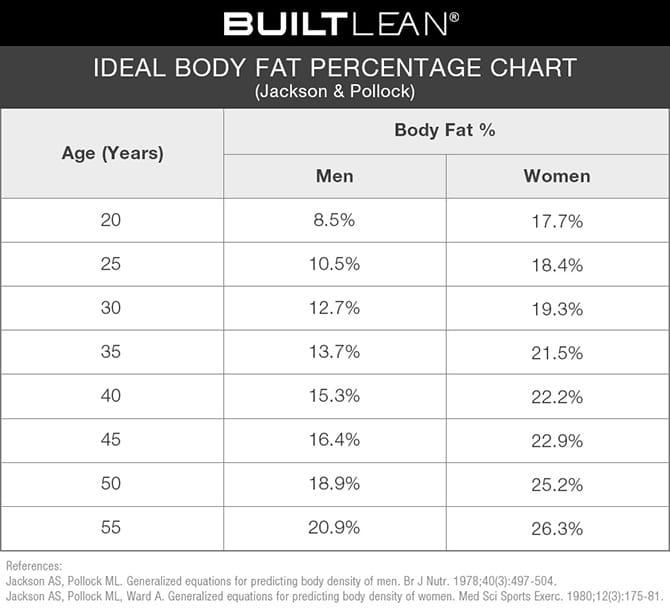Knowing the correct body fat percentage for women might sound a little too heavy on the science for the non-athletes of us out there.
But understanding this can be helpful when it comes to knowing that your physique is in an a-okay place.
Why? Well, as the late biologist Rose Frisch discovered in her research, evaluating weight alone can be misleading – as muscles are heavy (80% water compared to 5-10% water in fatty tissue), meaning that many athletes she analysed appeared in the ‘normal’ weight range, despite having no periods, as a direct consequence of their body composition aka r excessive leanness.
On the flip side of this, people with a low muscle mass and an unhealthily high body fat percentage open themselves up to health risks, illnesses and ailments. More on this to come.
So. How to know what's a good place to be resting at? Here's the lowdown.
What is body fat, exactly?
Body fat is measured by percentage, calculated by how much body fat you have in relation to the rest of your body (like your bones, muscle mass, organs, etc.).
While body fat percentage can be a fairly useful indicator of health – as mentioned, both high and low body fat are associated with certain health risks.
Is your BMI or body fat percentage a better measure of health?
Depends who you ask. The NHS uses BMI (body mass index), which requires no special tools or tech to calculate. Working it out is simple: just divide your weight in kilograms by your height in metres squared.
Related Stories6 Causes of a Weight Loss Plateau & What To DoGet Fitter & Leaner at Home in 21 Days24 Best Cardio Workouts, From 5 to 45 Minutes
As you've likely heard, BMI is not a perfect measure – for example, it fails to account for muscle mass, which, of course, body fat percentage does.
However, unless professionally done, body fat percentage measures are pretty inaccurate (sorry, fancy scale at your gym). Overall measures of body fat also usually don't pinpoint where on the body excess fit sits.
'Distribution of fat, which can be more important when assessing risk of disease,' Dr Frankie Jackson-Spence, NHS doctor, says. 'For example fat distributed centrally around your organs is more of a risk factor for metabolic diseases than subcutaneous fat elsewhere.'
What are the dangers of low body fat?
The risks associated with low body fat are similarly serious. Falling on the very low end of the spectrum will put you at risk of:
'When you’re focused on significantly lowering body fat, whether through following an extreme exercise regime and/or restricting calories, the body perceives you to be in a stressed state and decides this is not the time to reproduce,' says Dr Meggie Smith, a fellow in reproductive endocrinology and infertility at the University of Southern California.
'Signals from the brain to the ovaries, known as the hypothalamic-pituitary-ovarian axis, shut down.'
'The luteinising hormone [which triggers ovulation] isn’t produced and the ovary neither releases an egg nor makes oestrogen and progesterone.'
While being overweight or obese disrupts your reproductive system by producing too much oestrogen, veer towards the other extreme to a low body fat percentage and 'you essentially enter a post-menopausal state', warns Dr Smith.
This low-oestrogen state can have a knock-on effect, Dr Robinson says. 'This can have a very detrimental effect on bone health raising the risk of fracture, and also on your gut, immune system and mental health.'
How to maintain a healthy body fat percentage
'If you’re consuming fewer than 2,000 calories and doing endurance sport, your intake is likely to be inadequate,' says registered nutritional therapist Jo Scott-Dalgleish.
Compare a droopy, day-before-expiry pack of asparagus with a fresh bunch from a local market. The first isn’t offering you much energy.
'It’s not only about a healthy diet, it’s about healthy food,' urges Dooley. 'Your gut microbes are important, so think about the food that your body’s bacteria eats.'
Don’t swerve carbs in favour of protein. 'The body’s primary aim is obtaining fuel,' says Scott-Dalgleish. 'If there is a lack of fuel (carbs), then the body will convert protein into it – thus not using protein for repairing or building.'
Scott-Dalgleish suggests consuming more starches and sugars (including fruit and veg) on heavier training days.
Kirsti BuickKirsti is a health and fitness journalist, a personal trainer and tech junkie. This content is created and maintained by a third party, and imported onto this page to help users provide their email addresses. You may be able to find more information about this and similar content at piano.io